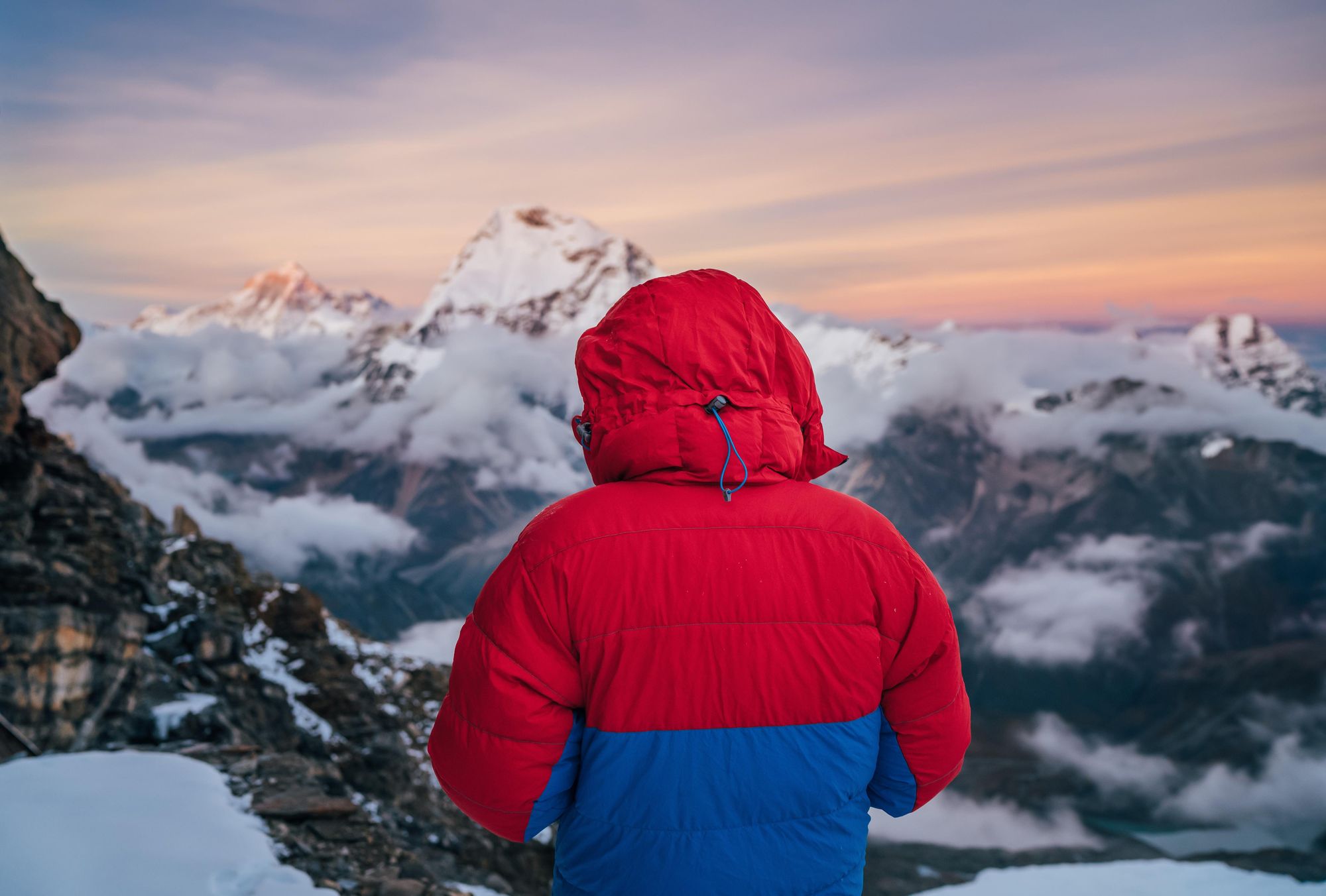“Global warming is one of the major issues that the world is fighting against, but here in Nepal, we are facing the problem,” says Bishal Bastola, a destination expert who works in adventure tourism in Nepal. “Here at high altitude, you can see that life is changing in the mountains.”
Bastola started his career outdoors as a porter, over a decade ago. Today he works in business development for Freedom Adventures, a partner of Much Better Adventures, and a company guiding treks on the likes of the Annapurna Circuit and Everest Base Camp routes.
Tourism is not only our job, it is our hope for the future and the Nepalese economy.
Clients are driven from Kathmandu, the Nepalese capital, to the trailhead in an electric car.
“We’ve saved 2.5 tonnes of carbon emission output this season alone,” says Bishal. I ask about the climate. “We’ve been seeing late monsoon seasons and untimely rain. We’ve had floods and landslides at higher altitude. The glaciers are very big, but they’re melting. Sometimes it’s hard to find a good place to camp at high altitude, and there are more crevasses opening than before. We can see them when we are fixing our ropes. It is changing the way we do business.
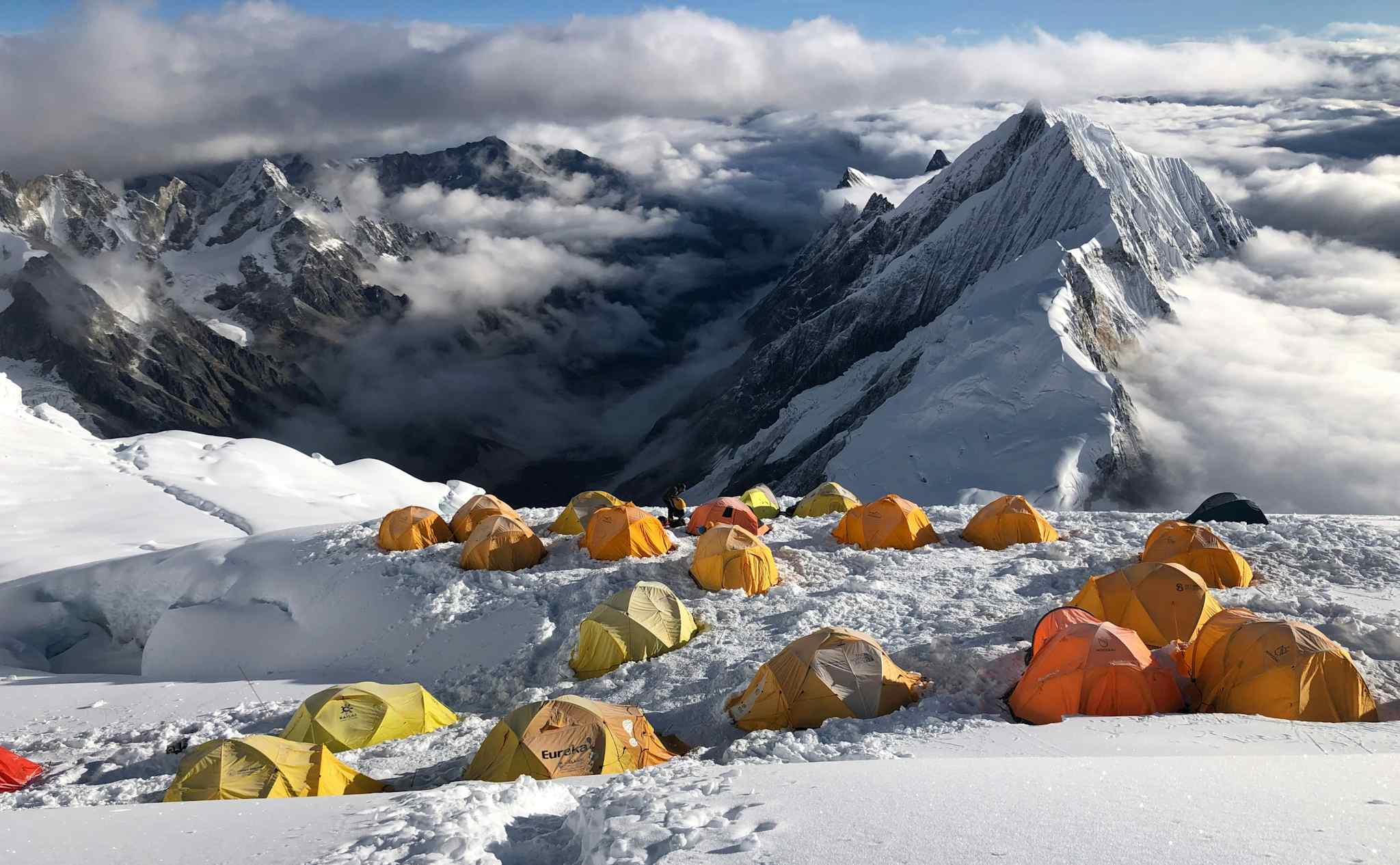
“Tourism is not only our job, it is our hope for the future and the Nepalese economy. We cannot compete with other countries in terms of industry or exports, but we have these 8,000m mountains and glaciers. If we don’t preserve them, our whole economy could collapse in a few years.
“From the government’s side, that is the most important thing. They have a policy of net zero carbon emissions by 2045, but private companies who run these businesses in the mountains - we need a plan too or we won’t achieve that goal. If the mountains are not there, our future is not secure. We need to preserve this for the next generation. We need to act.”
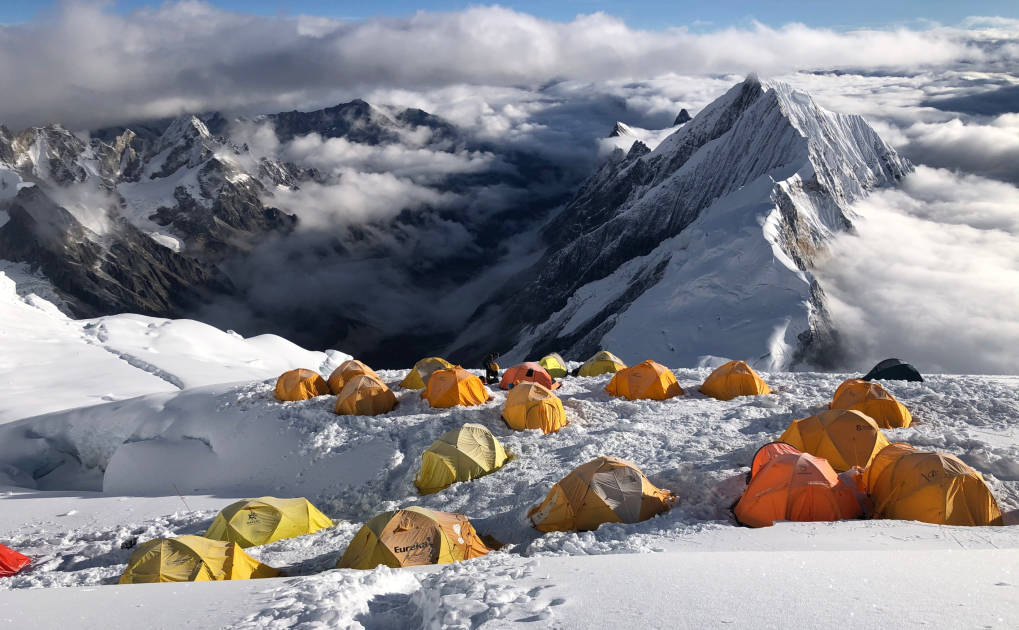
This is the paradox of tourism; an industry essential to so many global economies, which also contributes significantly to the climate change which negatively impacts those places.
So, how does tourism tackle carbon emissions? A roadmap does exist.
The Scale of the Problem
Around 330 million people work in tourism and travel - making it responsible for more than one in 10 jobs worldwide. It is also responsible for creating 1 in 5 new jobs and 10% of global GDP. All of which is to say, it is an important industry.
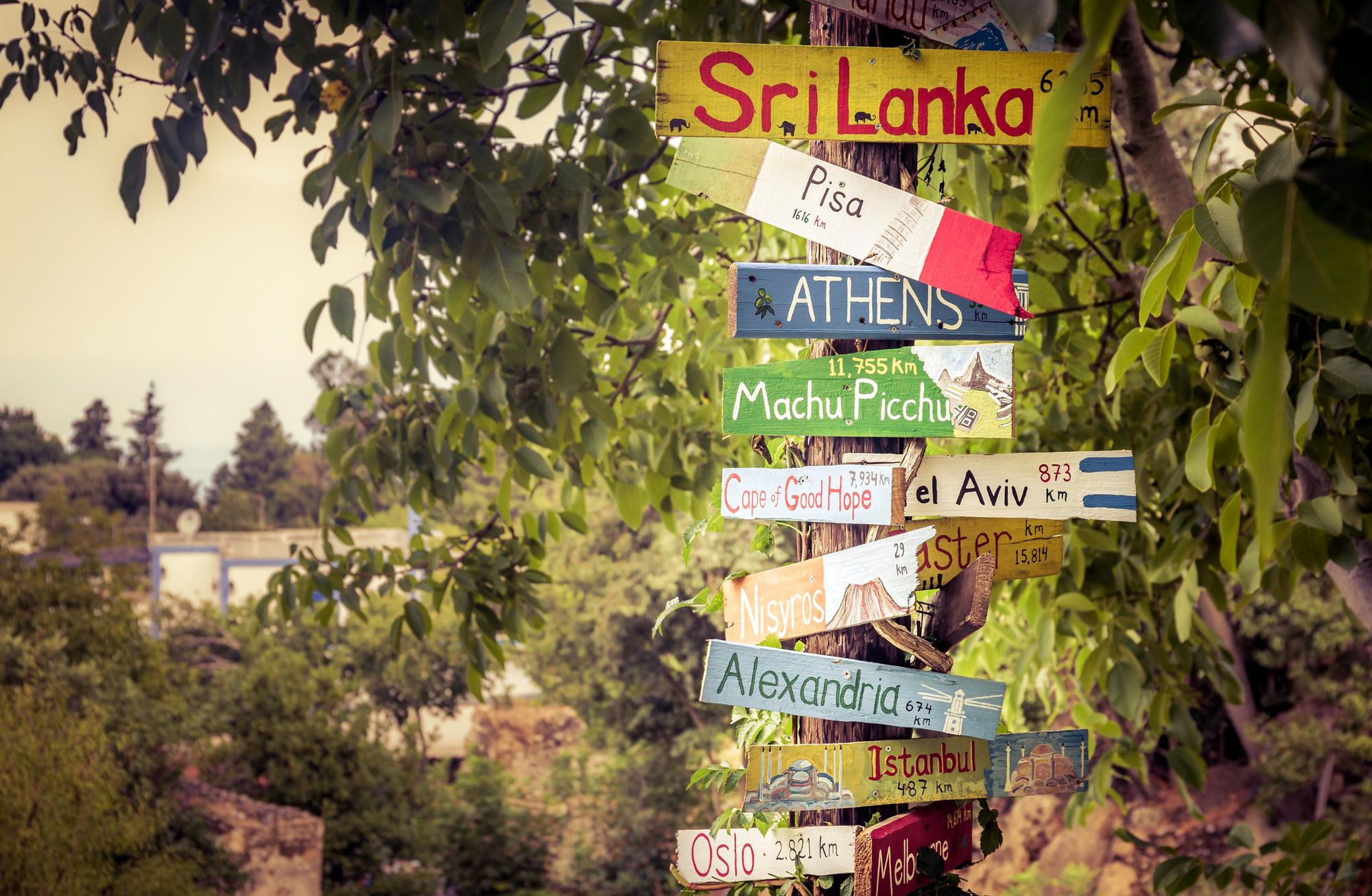
Beyond this, life is generally hard and holidays are, frankly, fun.
Adventures are our hard-earned break - our reward and revitalisation. At its best, tourism can create income streams, protect wild places and traditions, sure, but the big reason it is so unstoppable is that it’s the thing people look forward to; more than 5pm on a Friday, more than a takeaway pizza arriving at the door.
We really like going on holiday.
The issue is the sizable carbon footprint, which contributes to an issue which risks harming the lovely stuff it relies on.
A 2018 report in Nature marked tourism’s global carbon footprint as 8% of global greenhouse gas emissions (combining transport, food, agriculture, lodging, construction etc.). They noted that “the rapid increase in tourism demand is effectively outstripping the decarbonization of tourism-related technology” and projected that due to “high carbon intensity and continuing growth, tourism will constitute a growing part of the world’s greenhouse gas emissions.”
There are ongoing efforts to curb this. 850+ organisations signed the Glasgow Declaration on Climate Action in Tourism during COP26, pledging to halve emissions by 2030, reach net zero as soon as possible before 2050, and deliver a climate action plan showing how they plan to do this (thus creating a blueprint).
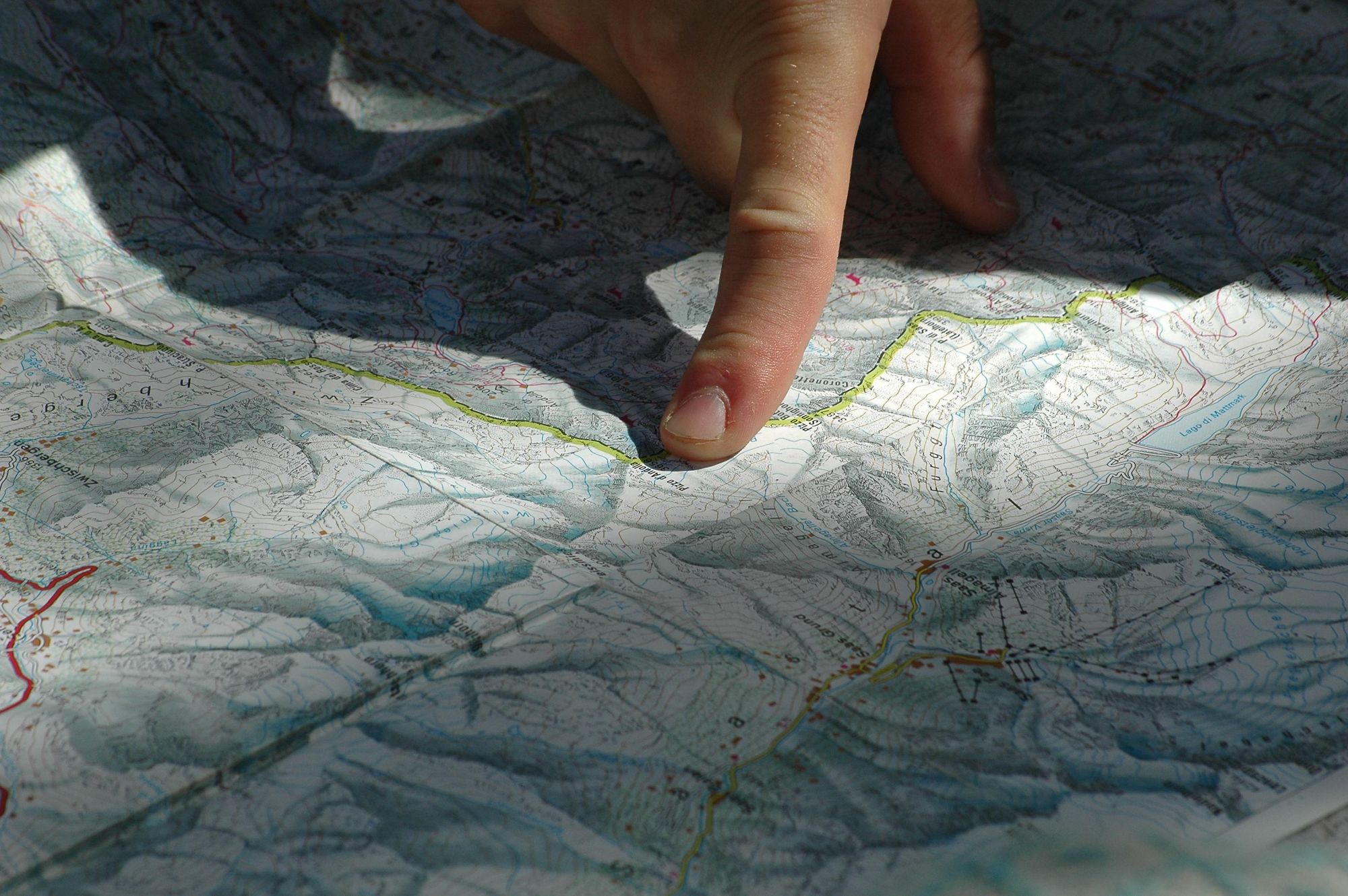
But UNWTO estimates that by 2030, transport-related CO2 emissions from tourism alone will have grown 25% from 2016 levels - a growth that will represent 5.3% of all man-made emissions.
The emissions generated by tourism - and crucially, the flights required to facilitate it - are central in many discussions around decarbonisation. This often forms the arena for this conversation. So there is an onus for urgency. To reach net zero, tourism will have to look at every front, from flights to entire supply chains, but there is a feeling that if tourism can decarbonise, every industry can.
How to Decarbonise Tourism
“I really love this idea of being creative about how you redesign what you sell, so it becomes a better experience for the customer, just with a much smaller footprint,” says Charlie Cotton.
Cotton is the founder of ecollective, a carbon consultancy company focused on measuring and reducing organisation’s carbon footprint. His background is in tourism - designing trips. “I was wishful in terms of how sustainable they were, or perhaps naive,” he says. “I got frustrated at it being more talk, less action. I wanted a more numbers-based approach.” So, he developed one.
A travel operator is made up of a lot of moving parts. There’s transport and tour guides; the food the guests eat and the lighting the finance team use; fun stuff like bicycles and boutique hotels and boring stuff like office heating.
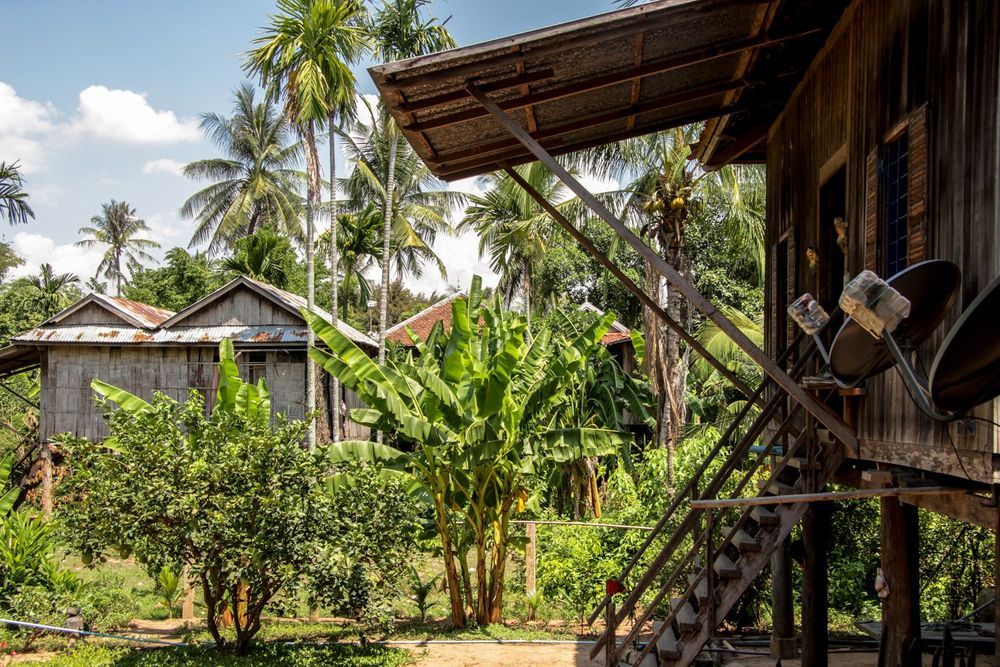
That also means that, for a travel operator, there are myriad ways to cut your carbon footprint, many of which reduce tourism leakage as a happy byproduct - using local guides instead of flying one out, or embracing local food and drink suppliers. Given the fervour for ‘authenticity’ these days - a buzzword which usually translates to the desire to get away from other tourists and eat and sleep the way the locals do - this is actually rather convenient.
“For me, the point of tourism is to feel relaxed; go on adventures; see the world,” says Charlie. “The benefit of it is that tourism can be a huge distributor of wealth, from traditional wealthy countries to less wealthy. If we can do that with a smaller carbon footprint, that’s amazing.”
If you work with 100 hotels and can incentivise them to have a smaller footprint, then the footprint of every customer who uses those businesses comes down as well.
Ecollective’s approach is to look at the average carbon per traveller - and work out how the footprint of each individual ingredient which makes up that number could be reduced. “Using Much Better Adventures as an example, we take your total footprint; so the emissions from all the trips - the hotels you include, the activities, the meals, the trip leaders, and we also include your HQ emissions,” says Charlie. “So everyone’s working-from-home footprint, or business trips.
"I then divide that number by the total number of customers you had that year to get the average carbon footprint per customer, per day. It’s about improving whatever your score is.”
Charlie sees some easy wins - such as making hotels more energy efficient. “They’ll spend less money on electricity, heating and air conditioning. They can keep the room just as warm and they can still charge the same. But actually, I’ve found that it’s tour operators that are taking the lead.

“Some tour operators get very excited about their spider web of influence. If you work with 100 hotels and can incentivise them to have a smaller footprint, then the footprint of every customer who uses those businesses comes down as well. That’s a cool impact; that multiplier effect.”
This approach is a lot longer-sighted, data-based and, frankly, a lot more work than the most notable alternative, carbon offsetting. “I worry about phrases like ‘guilt-free trips’,” Charlie says.
“Some people worry: are we greenwashing? I really don't think we are. Your score was this, and next year it's that. It's black and white. People could greenwash on top of it; trying to explain why it's gone up or down, but that's not really our job. We're very much the accountants.”
It’s worth noting that different forms of tourism have drastically different carbon footprints.
“Depending on the trip, it can be as high as 600kg of CO2 per day - that could be an Antarctic Cruise - or it could be as little as 10kg, and companies can redesign that down. The idea is getting that score lower, year on year on year.”
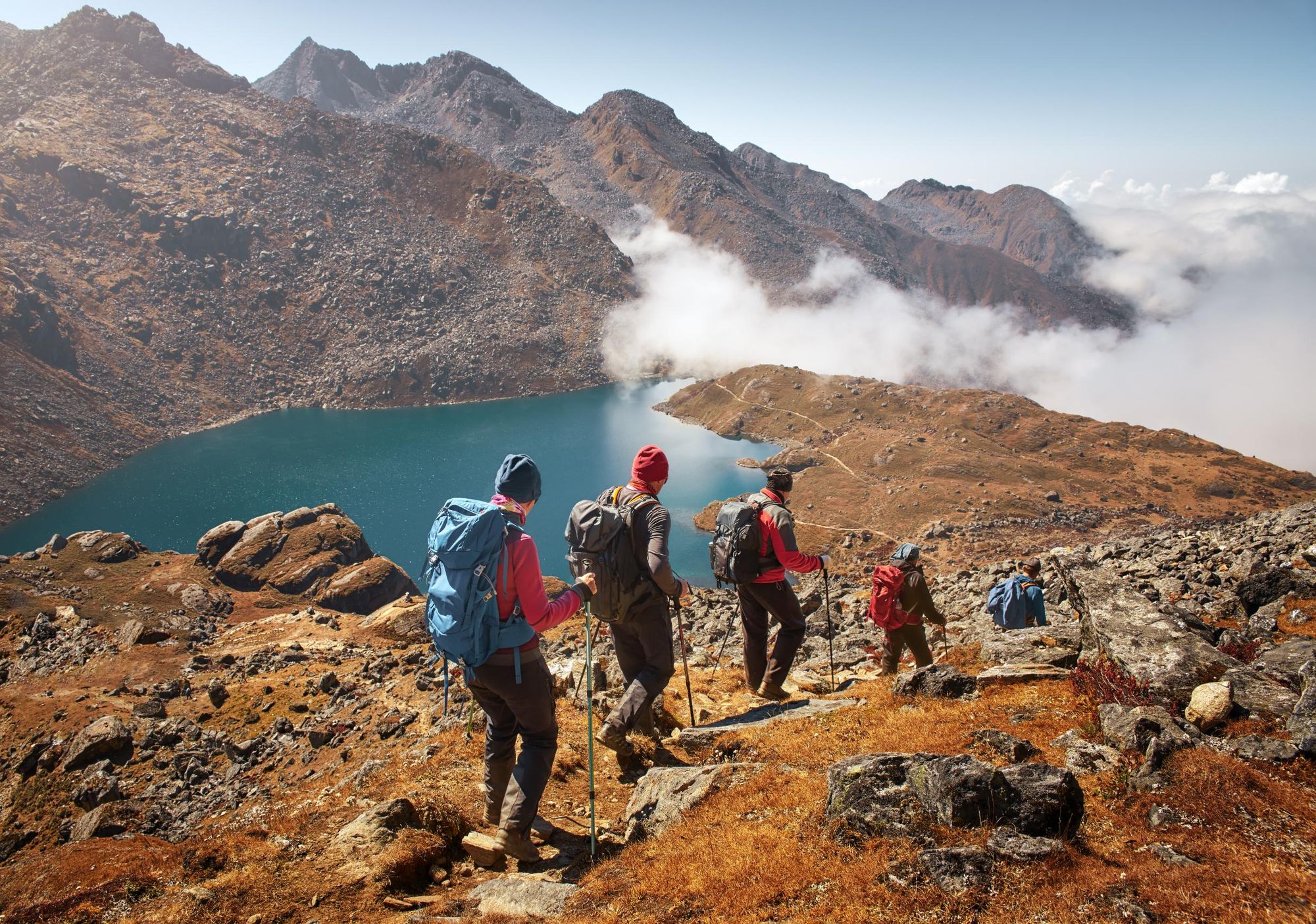
The carbon footprint of Much Better Adventures was 12,388,696 kg CO2e in 2023, of which estimated customer flight emissions were 10,488,029 kg CO2e (around 85% of the total). In 2023, the carbon emissions per Much Better Adventures traveller were 33kg per customer per night; a figure the company is hoping to bring down to 17kg by 2030.
“Hotel emissions are coming down quicker in Europe, because it’s going to a renewable grid quicker,” Charlie says. “Meal habits are changing. Activities lead the way, and a lot more are now about getting sweaty - running, cycling, kayaking, and they have a tiny, tiny carbon footprint, if anything at all. And transfers on land are making progress, switching to electric.
The downside is definitely flights. It’s the elephant in the room.
“The downside is definitely flights. It’s the elephant in the room. On a standard holiday 70%-80% of your footprint comes from flights and they’re only reducing 1-2% each year. There’s talk of sustainable aviation fuel and airline efficiency, but there’s no sign that percentage is going to change in the next 5-10 years, really.
“That's the depressing side of things - because, what the hell are we going to do about that?”
How to Decarbonise Flying
On 9 April 2024, More in Common released their Europe Talks Flying report. Drawing on the polling of over 12,000 people, and focus groups in six countries, it sets out a sequence of policies - popular with the general public - which politicians could implement to decarbonise flying.
“It’s a big part of emissions - about 3.5% of global emissions,” says research manager Ed Hogdon. “There is a need to decarbonise flying, but there’s not really an obvious way to do it. There’s not really a technological solution that’s ready now. So the only solution is finding ways to reduce the amount of flying, which is a bit of a disaster if you’re a policy maker, because you don’t want to tell people not to go on holiday. Not only could that cause a massive backlash on flying policy, but you’re probably going to cause a backlash to all of climate policy.”
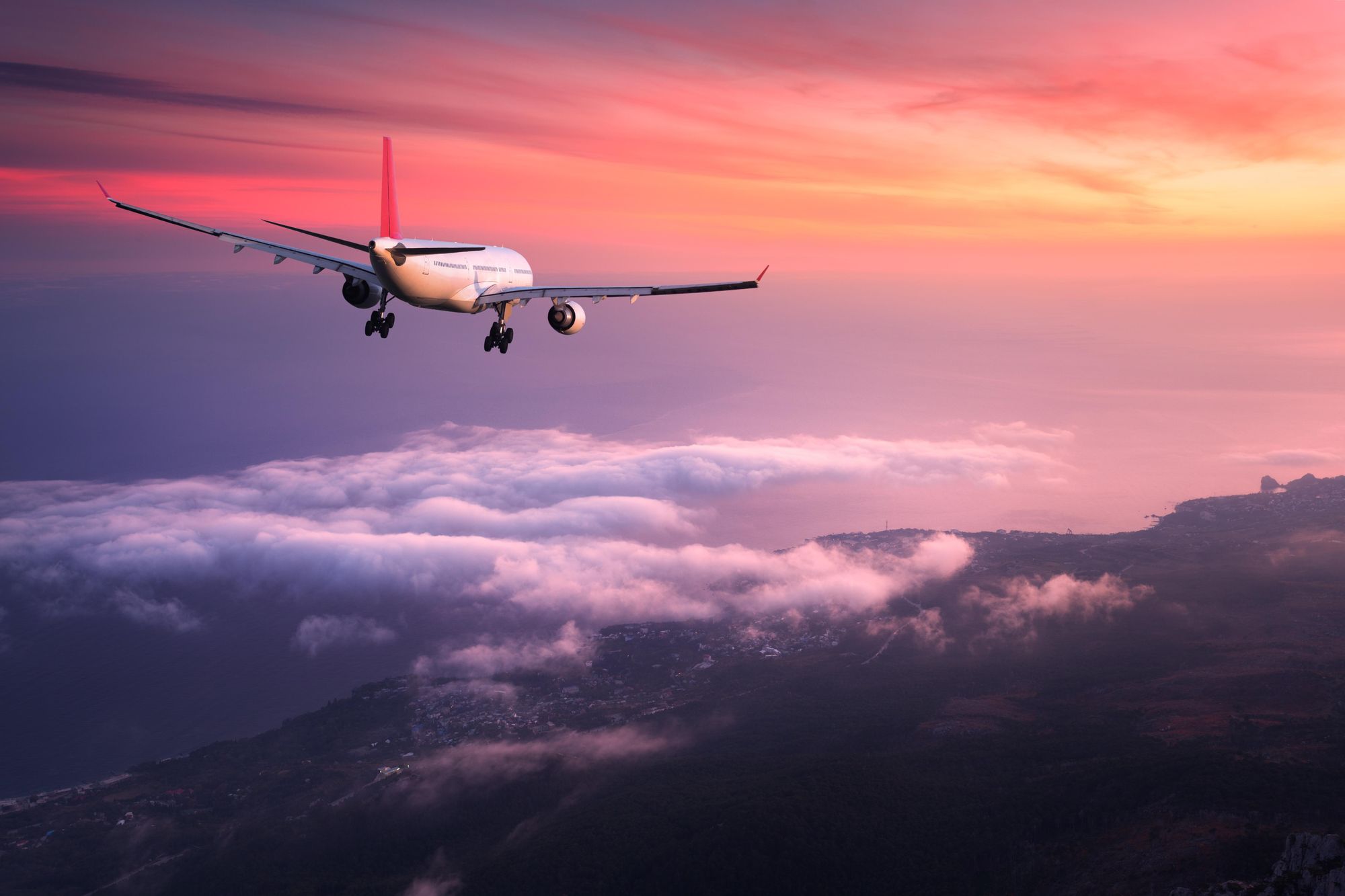
Hodgson points to the backlash against heat pumps in Germany and farming policies in the Netherlands as examples of climate policies detrimental to the wider green movement.
“There’s been no comprehensive policy on flying and climate change,” says Hodgson. “One of the most surprising things is that jet fuel isn’t taxed [in Europe]. You pay to tax your car, and there’s tax on train tickets in some cases, but there’s no tax on the fuel that goes into an airline.
“It’s a small amount of people responsible for most of the flying. In Europe, half of people haven’t flown in the last year, but policymakers have been afraid to touch it - perhaps because they fly a lot and they’re afraid they’ll be called hypocrites. So if you are serious about making reductions to flying, how can you do it in a way that doesn’t undermine the credibility of your ambitions?”
That’s what the report set out to find.
Key insights from that report include the fact that most people actually do enjoy flying and would even fly more if it wasn’t for the cost; that ‘flight shame’ is a minority view; that people want airlines to take climate change seriously, but don’t trust them to do so honestly (the most popular policy polled was “requiring airlines to publish their aviation impact”). And it’s age and income, rather than concerns about climate change, that tend to drive flying behaviour.
“If you’re more worried about climate change, it basically makes no difference to how much you fly,” says Ed. “Younger people tend to have a bit more disposable income, and don’t have a family to look after, so they’re flying more.”

A frequent flyer tax - “where everyone gets one tax-free flight a year, but after that, you get an increasing tax” - is pointed to by many as the obvious way to decarbonise flying. Hodgson doesn’t disagree, but notes it would be tricky for people to digest or accept before politicans address private jets.
“If you're not thinking about public opinion, it makes a lot of sense,” says Ed. “Most people only fly once a year, so they're targeting only those who fly frequently, and you're getting at the root of the problem - which is people who fly loads, not people who just want to fly once or twice.
We could see a tax on private jets being one of the few taxes the public do support.
“The issue is that when you talk to people in focus groups about a frequent flyer levy, they say, ‘I understand why you're doing it, but why would a politician try and stop me from flying when they are going around the country in their private jet? Why would you tell me I can't go on a holiday when footballers are flying from Newcastle to Manchester rather than taking the bus?’”
The public wants airlines and frequent flyers to pay for decarbonising aviation, the report notes, so tackling private jet usage and promoting plane-to-train policies are clear first steps.
“There's a lot of people who say that private jets don't cause that many emissions,” says Hodgson. “It's 2% of all flying, so you're not going to solve climate change by taking on private jets, but the point is that the sequencing and the communications matter.

“There’s already a lot of anti-elite sentiment in the UK and Europe, which the anti-net zero movement has picked up on,” says Hodgson. “They’ve been very successful at saying ‘look at these rich people, putting climate costs on everyone and restricting your freedoms’, but there’s an opportunity here for pro-climate people to use this sentiment and say ‘these rich people, in a cost of living crisis, flying around in private jets - they should pay the cost of a green transition’.
“Imagine a super tax; an 100% tax on private jet fuel, and you say ‘we’re using this to pay for new bus routes. It makes the green transition easier and the heaviest polluters pay the way’."
The report highlights that "across all countries there is a dissatisfaction with the cost of train travel, and a sense that charging more to take a train than to take a flight is illogical." Policies adhering to the above could be one way to change that.
Hodgson continues: “Once you’ve taken on private jets, you can think about first and business class, sending people around the world and leaving seats empty. You ask them to pay the way and use the money to fund better train links. Then finally, you can say, ‘our politicians have clamped down, we’ve taken on private jets and they paid for our green transition. Now, we’re going to put forward this frequent flyer levy’. You have to do it right if you want to manage that transition well.”
There’s no time like the present, Hodgson notes. “Keir Starmer is going to have to raise money somehow. We could see a tax on private jets being one of the few taxes the public do support.”
Starmer’s newly-elected government has indeed vowed to take a global lead on climate action, though it is not yet clear exactly what that will involve.
“Politicians are scared to talk about flying,” Ed says. “We're hoping to open the conversation.”
Creating a Standard
Back in the mountains of Nepal, Freedom Adventures have long been teachers of Leave No Trace principles. “Camp in the high mountains, but don’t impact the environment,” says Bishal.

Education is key for behavioural change in Nepal, he notes. “Education levels are so different here. 40% of the people live below the poverty rate,” he says. “The problem is in cities, because in the villages, people have a lifestyle which is not so harmful for the environment - but in Kathmandu air pollution is so high that sometimes after five minutes you can feel it in your nose or throat.
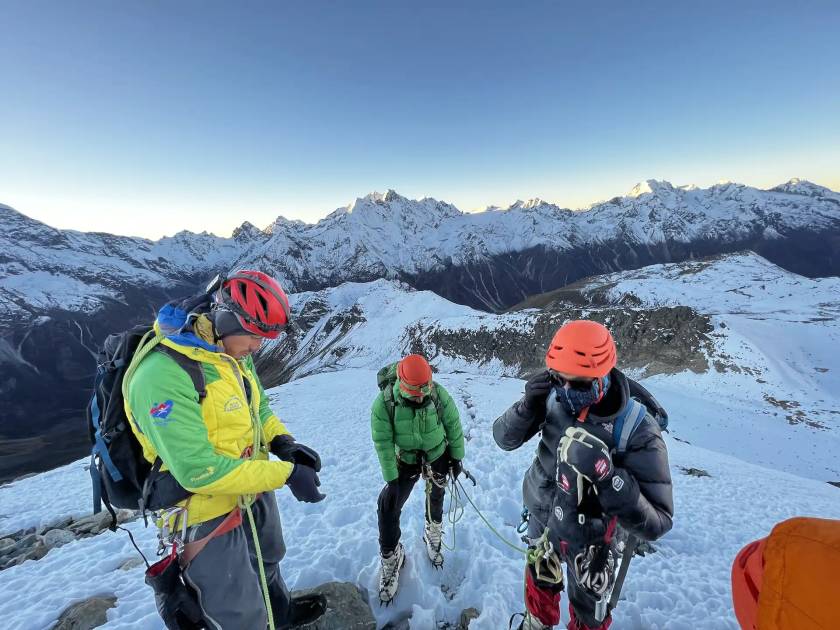
“From our business, our [emissions] are very low compared to the globe - but at least we can do something from our end. We’re also going to be working with our suppliers, and tree-planting at high altitude, because the locals don’t know how to deal with floods, and we can see landslides.
“This is just one step, but if we do this, and other businesses copy, we can make a standard.”
Decarbonising travel is an ambitious but urgent process which must happen across industries - but a roadmap does exist. It is possible to decarbonise travel.
Read Much Better Adventure's annual carbon footprint progress report here.

